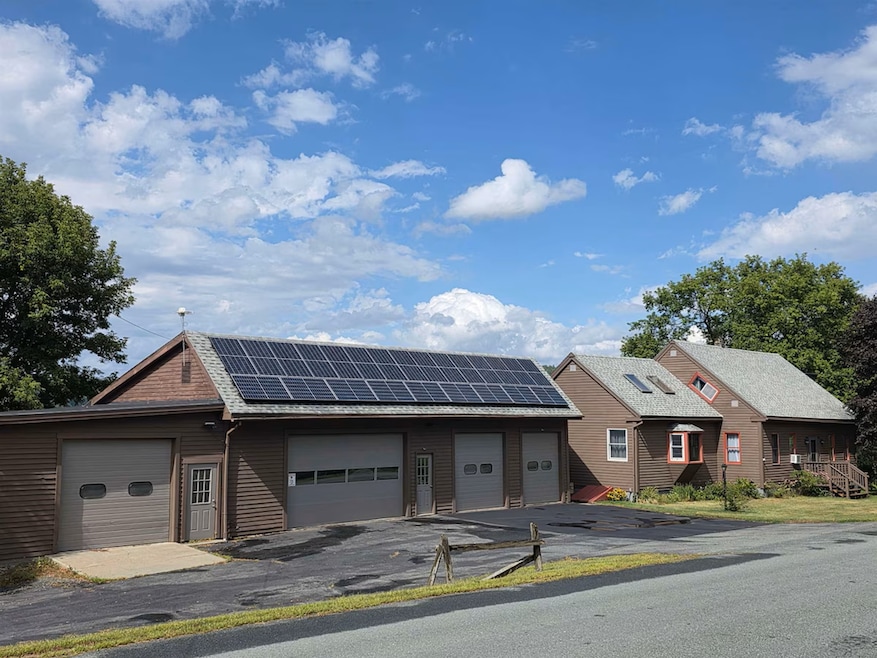To the untrained eye, these windows look odd.
They’re tilted, askew, tucked almost uncomfortably close under the eaves. Perhaps that’s why they acquired somewhat sinister nicknames, including “witch window” or “coffin window,” over the years, but the New England-concentrated fenestrations aren’t ominous; they’re just quirky. And they’re a piece of architectural folklore in the United States, explained Elizabeth Peebles, a state architectural historian for Vermont.
“The folklore around the witch window is that if a window is tilted, a witch could not fly through on their broomstick,” Peebles explained. “That being said, I mean the houses have other windows that [a witch] could fly through.”
Still, folklore is folklore, and one crooked window is at least one witch-proof entrance.
Sometimes, Peebles continued, the feature is referred to as a “coffin window.” That name comes from a separate thread of lore “around the idea that it would be easier to — and again, I don’t necessarily agree with this — slide the coffin down the roof” of a L-shaped addition. So that’s another layer of spooky lore.

The windows embody 'practicality and expediency'
In reality, the windows stem from “a northern New England sense of practicality and expediency,” Peebles said.
Generally, a witch window is a double-hung window that is tilted to follow the eave of the roof line, almost always nestled between the higher roof of a main house and a lower line of an addition below.
Often found in farmhouses across the East Coast, these tilted, rectangular openings are commonplace in Vermont, Peebles said. The state, after all, has a solid agrarian legacy and plenty of aging farmhouses were added to and expanded over the generations. As homeowners expanded these homes, tacking on a new wing here, or a L-shaped addition there, they wanted to pull more daylight into the new parts of the house.
“Rather than get a custom window made or specialty size, or shape, or configuration, you just tuck [the regular window] up there and tilt because that’s how it will fit,” Peebles said. Once installed, the tilted windows function like any other predictably oriented glazing, offering light and ventilation.
“At the root of it, Vermont builders in the 19th century, they generally went for the practical and the ‘oh, what won’t cost me too much money,’’’ approach, Peebles said.
A building feature that offers local authenticity
Although pinpointing the exact origin of witch windows remains tricky, they’re usually found in homes from the second and third quarters of the 19th century. But they’re not a dying breed of architectural feature by any means, Peebles noted.
“I think people really do kind of naturally protect and preserve them, because people, generally speaking, like things that make their house feel comfortable,” Peebles said. When people rehab old homes, you’ll rarely find someone saying they want fewer windows, she continued, plus there’s the sense of familiarity a witch window offers New Englanders.

“There’s the visual comfort of it,” Peebles said. “Like, ‘I recognize this, I know this.’”
Rosemary Gingue from Begin Realty Associates echoed the sentiment; the agent has a witch window-studded house at 1065 Higgins Hill Road, on the market in Saint Johnsbury, Vermont, for $573,000.
Some builders even fold the feature into newer homes to lend a project local authenticity. Sometimes, it’s a casement window instead of a double-hung option, but Peebles thinks “part of that is the developer’s eye toward the local vernacular,” she said.

Still, a unique feature comes with its own maintenance challenges. For the witch window, sitting between two roof lines can mean the opening is more prone to moisture damage — especially in Vermont’s snowy winters — so they might need “a little bit of extra maintenance just to keep them in good shape.”
For Peebles, keeping these tilted windows healthy is worth the extra care.

“Just the fact that there are multiple interpretations of these windows, I think, shows how much people are invested in their houses and the physical landscape around them,” she said.
